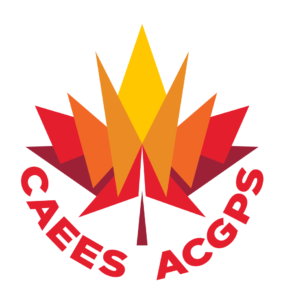CAEE – Distinguished Webinar Series in Earthquake Engineering and Seismology
Seismic hazard assessment in Canada for engineering applications: best practices and recent updates
Presenters: Michal Kolaj, John Adams and Stephen Halchuk
Canadian Hazards Information Service, Natural Resources Canada
Wednesday, September 15, 2021, 3:00 p.m. EDT
Registration Link: https://yorku.zoom.us/meeting/register/tJUpdOuoqjgtHtdVWRdHgj_-phkZ7ftObJTh
Abstract
Damaging earthquakes have occurred and will inevitably occur again in Canada. Correctly estimating the hazard posed by these events is of critical importance to inform public policy and to ensure that earthquake resistant engineering is appropriately provided across Canada. Modelling earthquake hazard through probabilistic seismic hazard assessments (PSHA) also provides a quantitative means of determining and planning for future losses. However, PSHA is often seen as a “black box” tool where the process by which the results are generated and their physical meaning can be unclear to many of its non-expert end-users. Through a review of seismic hazard assessment in Canada, this presentation will explain the fundamentals of PSHA, specifically how the assessment of the rates of seismicity and the strength of the shaking from large earthquakes is quantified and combined in a probabilistic framework. Subsequently, the presentation will outline the latest hazard assessment, the 6th Generation Seismic Hazard Model of Canada, which is currently proposed to be the basis for seismic design values in the 2020 edition of the National Building Code of Canada (NBCC). The model incorporates recent research on the rate of great Cascadia earthquakes, includes a new potentially active fault in southern Vancouver Island, and incorporates the latest updates of the ground motion predictions of large earthquakes. For the first time, hazard values will also be provided for a continuous range of site conditions, expressed in VS30, which expands the applicability and usefulness of the results. To improve access to the full suite of values, a new and improved online seismic hazard web-tool is being developed with expanded capabilities such as the direct inclusion of site condition effects, street address lookup and various seismic hazard graphs.
- Michal Kolaj (research scientist, Natural Resources Canada) contributed significantly to the development of the 6th Generation Seismic Hazard Model of Canada and the earthquake hazard provisions proposed for the 2020 edition of the National Building Code of Canada (NBCC). He is now leading the development of the next generation of models intended for NBCC2025. He is a member of the Standing Committee on Earthquake Design where he is working towards the development of the seismic hazard provisions for future editions of the NBCC.
- John Adams (research scientist, Natural Resources Canada) has had a 41-year career involving all aspects of the earthquake program, from running field aftershock surveys to managing the program, and from creating national seismic hazard maps to participating in post-earthquake engineering reconnaissance visits. He has been involved in improving seismic hazard estimates for the NBCC since 1986.
- Stephen Halchuk (seismologist, Natural Resources Canada) has been involved for most of the past 30 years in the development, testing, assessment, and implementation of the models used to quantify seismic hazard for use in the National Building Code of Canada. He has contributed to the 4th, 5th and 6th generations of the Canadian seismic hazard model, and communicated their results to the engineering community.
